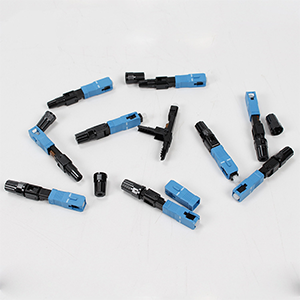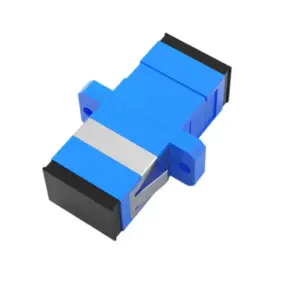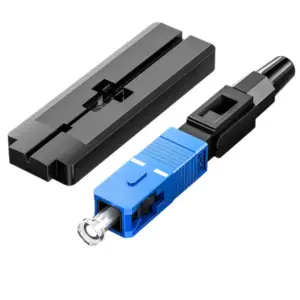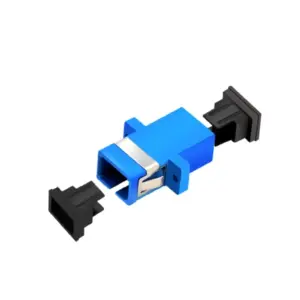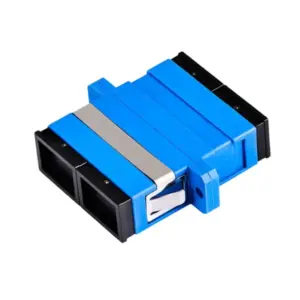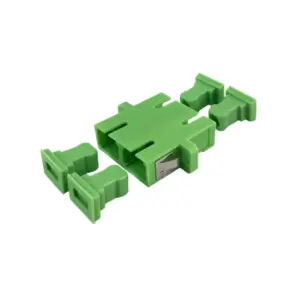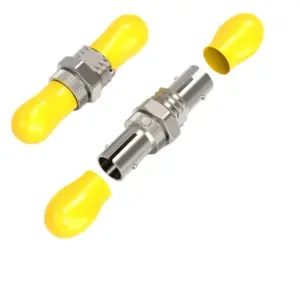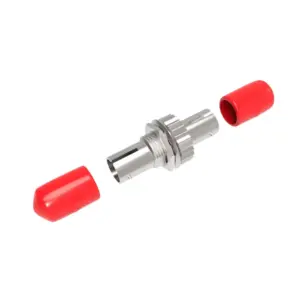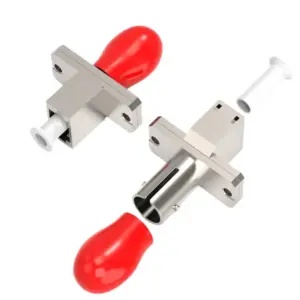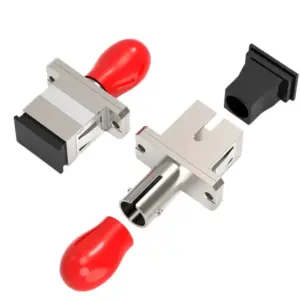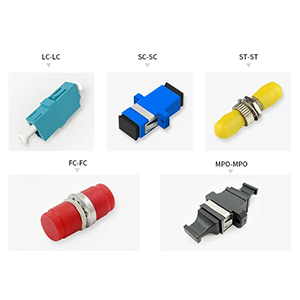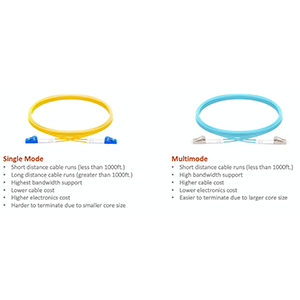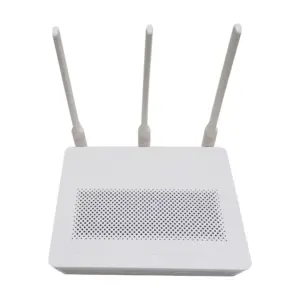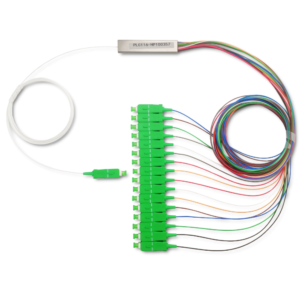Hi everyone! Today I want to talk to you about the important role in optical fiber connectors-FC optical fiber connectors. In the field of modern communications, high-speed, reliable data transmission is crucial, and FC connectors are the key to helping you achieve this goal. In this article, I will take you in-depth understanding of the design, characteristics and applications of FC fiber optic connectors. Let us uncover the mystery of FC connectors and explore its wide range of applications in various fields.
Overview of fiber optic connector knowledge
Optical fiber connectors are devices or components used to connect optical fibers. They play a vital role in optical fiber communications. The basic principle of fiber optic connectors is to enable efficient transmission of optical signals and minimize the loss and reflection of optical signals by precisely aligning the core of the optical fiber.
In optical fiber communication systems, optical fiber connectors play the role of a bridge connecting optical fibers. The optical signal enters the connector from the transmitting end of the optical fiber, passes through the optical fiber alignment structure inside the connector, and is transmitted to the optical fiber at the receiving end. Good connector design and performance can ensure efficient transmission of optical signals, thereby ensuring the stability and reliability of optical fiber communication systems.
The importance of fiber optic connectors is reflected in the following aspects:
- Low-loss connection: Fiber optic connectors can provide precise fiber alignment, reduce the loss of optical signals at the connection, and ensure the transmission quality of optical signals.
- High-speed transmission: Modern optical fiber communication systems need to support high-speed data transmission. Optical fiber connectors can meet the needs of high-speed transmission and maintain data integrity and stability.
- Reliability and stability: The stability of optical fiber connectors is crucial for long-term operation of optical fiber communication systems. It can provide reliable connections and resist the influence of the external environment.
- Flexibility and pluggability: The design of the optical fiber connector allows the plugging and unplugging of optical fibers, which facilitates system maintenance and upgrades, and also supports flexible connections and configurations between optical fibers.
Common fiber optic connector types include SC (Subscriber Connector), LC (Lucent Connector), ST (Straight Tip), FC (Ferrule Connector), etc. Each type of connector has its specific uses and advantages. Among them, the FC connector is a commonly used optical fiber connector that connects optical fibers through a cylindrical insert (ferrule). In the subsequent introduction, we will focus on the working principle, structure and characteristics of FC connectors.
Overview of fc connector design and structure
FC (Ferrule Connector) fiber optic connector is a common and widely used fiber optic connector. It is designed with reliability and stability and is suitable for various fiber optic communication and data transmission applications. The following is a detailed introduction to the design features and structure of FC connectors:
External structure:
- Shell: The outside of the FC connector is usually made of metal shell, such as stainless steel or chrome-plated material, which can provide good physical protection and corrosion resistance.
- Receptacle: There is an inlet ring at the front end of the connector, which is used to secure the connection between the connector and other devices.
- Threaded structure: FC connectors usually have a threaded structure to achieve a stable connection and prevent loosening during plugging and unplugging.
Internal components:
- Insert (Ferrule): The core part of the FC connector is the insert, which is a cylindrical part, usually made of ceramic or metal materials. There is a precise fiber hole inside the insert to accommodate the fiber core.
- Fiber Alignment Structure: Inside the insert, there is a structure for fiber core alignment, usually a V-Groove or ball structure. This structure ensures that the fiber core is accurately aligned with the target core when the connector is inserted, achieving optimal optical signal transmission.
- Flange: There is usually a flange on the outside of the insert that holds the insert in place in the connector and provides additional stability.
- Threaded Interface: The FC connector also contains a threaded interface inside, which is used to connect the insert and the connector shell to ensure the firmness and stability of the connection.
Reliability and Stability Design:
- Insert protection: The insert of FC connectors is usually made of strong materials with good wear resistance and pressure resistance to protect the core from damage.
- Threaded connection: The threaded structure of the FC connector can provide a firm connection and resist external vibration and pulling force, ensuring the stability and reliability of the connection.
- Ceramic inserts: Some FC connectors use ceramic inserts, which have excellent mechanical and thermal properties and can provide higher stability and reliability.
- Dust protection: Some FC connector designs adopt a structure with a hat-shaped protective cover (Dust Cap), which can protect the insert from dust and contamination when the connector is not in use.
Overall, FC connectors provide reliable, stable and high-performance fiber optic connections through rugged housings, precise inserts and solid threaded connection designs. It is suitable for various environments and application scenarios, especially in optical fiber communication systems that require long-term operation and high reliability requirements.
What are the features and advantages of fc connector
FC (Ferrule Connector) fiber optic connector has some unique features and advantages, making it widely used in the field of fiber optic communication and data transmission. The following are the main features and advantages of FC connectors:
Low insertion loss: FC connectors adopt precise insert design and core alignment structure to ensure precise alignment of optical fibers, thereby achieving low insertion loss. This means that the transmission loss of optical signals inside the connector is very small, maintaining the strength and integrity of the signal.
High return loss: The design of the FC connector and the threaded connection between the insert and housing provide good mechanical stability, allowing the connector to have high return loss. High return loss means that the connector can effectively reduce the reflection of optical signals and prevent interference and loss of reflected signals.
Durability and reliability: FC connectors usually use metal shells and sturdy inserts, giving them good durability and pressure resistance. This enables the FC connector to operate stably for a long time in various environments and resist the influence of external factors such as vibration, shock and temperature changes.
Adaptability: FC connector is a standardized connector type, so it is widely used in the fields of optical fiber communication and data transmission. It has strong compatibility with other types of optical fiber equipment and connectors, and can be interconnected with SC, LC and other connectors.
Safety: FC connectors usually adopt a threaded structure, and a secure connection can be achieved by rotating the connector housing. This structure ensures the safety of the connection and prevents accidental loosening or disconnection.
So FC connectors are widely used in fiber optic communications and data transmission applications due to their advantages such as low insertion loss, high return loss, durability and adaptability. Whether in data centers, telecommunications networks or industrial environments, FC connectors can provide reliable connections and stable performance to meet various application needs.
What are the application fields of fc connector
FC (Ferrule Connector) fiber optic connectors are widely used in various application fields. The following are application cases of FC connectors in different fields:
Data Center:
- Data center network: FC connectors are widely used in optical fiber interconnection of data center networks to connect servers, storage devices, network switches and other equipment to support high-speed, high-capacity data transmission.
- Storage Area Network (SAN): FC connectors are commonly used in Fiber Channel and fiber optic storage networks to connect hosts and storage devices to achieve high-performance storage access and data transmission.
Telecom network:
- Optical fiber communication system: FC connectors are widely used in fiber optic communication systems, including long-distance transmission and metropolitan area network (MAN) applications. They are used to connect optical cables, optical fiber transceivers, optical fiber distribution racks and other equipment to achieve reliable optical signal transmission and communication connections.
- Optical fiber transmission network: FC connectors play a key role in the optical fiber transmission network, connecting optical fiber transmission equipment, optical amplifiers and optical fiber splitters, etc., supporting high-speed, long-distance data transmission and network expansion.
Radio and TV:
- Optical fiber transmission system: FC connectors are used in optical fiber transmission systems in the broadcast and television industry, including the transmission of high-definition video signals, audio signals and data signals. They connect cameras, video routers, fiber optic transmission equipment, etc. to ensure high-quality signal transmission and broadcasting.
Industrial applications:
- Monitoring system: FC connectors are used in industrial monitoring systems to connect fiber optic cameras, video capture cards and monitoring centers to achieve high-quality video transmission and monitoring.
- Automation control: FC connectors are used in automation control systems to connect fiber optic sensors, data acquisition equipment and controllers to achieve reliable data transmission and remote control.
One of the advantages of the FC connector is its suitability for high bandwidth requirements and long-distance transmission, making it widely used in scenarios that require high-speed data transmission and long-distance communication. For example, in storage area networks that require high-speed data access, FC connectors can provide low insertion loss and high return loss to ensure the stability and reliability of data transmission. In long-distance optical fiber transmission, the design and structure of FC connectors can ensure the transmission quality and performance of optical signals, making it an ideal choice.
So generally FC connectors are widely used in data centers, telecommunications networks, radio and television, and industrial applications. Its reliability, stability and adaptability make it the first choice for high-performance fiber optic connections to meet the needs of different industries and applications.
Summary
FC fiber optic connectors, as an important part of fiber optic communications, demonstrate outstanding performance in various fields with their unique designs and advantages. Its reliability, stability and high performance make it the first choice for many application scenarios. Whether in data centers, telecommunications networks, or broadcast and television, FC connectors demonstrate excellent performance and meet high bandwidth requirements and long-distance transmission requirements.
When you choose FC connectors, you get low insertion loss, high return loss, and durability and adaptability in a variety of environments. Whether you are building a new network or upgrading an existing system, FC fiber optic connectors can provide you with excellent transmission quality and reliability. If you have more questions about FC connectors or need more details, please feel free to contact us. Let us work together to build a fiber optic network with seamless connections and efficient transmission!
FC Connector FAQ
In the context of fiber optic connectors, “FC” stands for “Ferrule Connector.” The FC connector is a type of fiber optic connector that uses a threaded barrel to secure the connection. It was one of the first types of connectors developed for fiber optic applications and is still widely used today, particularly in telecommunications and networking environments.
An FC connector features a threaded barrel design with a metal coupling nut. It has a ceramic ferrule at the end to align and protect the fiber cores.
FC connectors offer a high degree of mechanical stability, making them suitable for applications that require ruggedness and durability. They also provide low insertion loss and good repeatability.
FC connectors are commonly used in applications such as telecommunications, local area networks (LANs), data centers, and test and measurement equipment.
FC connectors are compatible with both single-mode and multimode fibers. The connector type (FC) is independent of the fiber type.
FC connectors are typically polished using a UPC (Ultra Physical Contact) polishing method, which provides a flat or slightly curved endface.
FC connectors can be mated with other FC connectors, providing a secure connection between two FC-terminated fiber optic cables. However, they are not directly compatible with other connector types without using appropriate adapters.
Yes, FC connectors can be field-installed using specialized termination kits and tools. However, achieving high-quality terminations may require expertise and experience in fiber optic termination.
FC connectors are commonly color-coded with a single color, usually a metallic or black color. However, color coding can vary depending on specific applications or industry standards.

